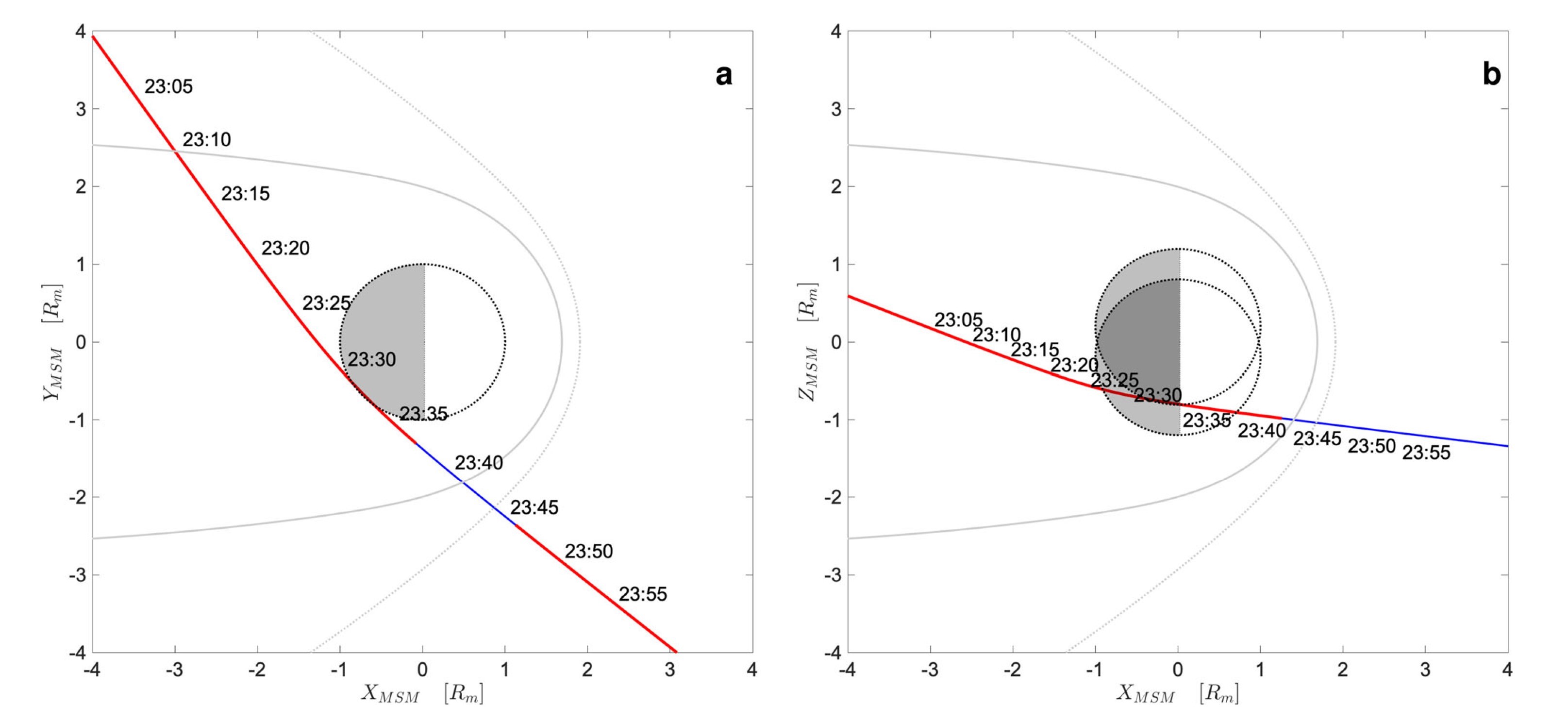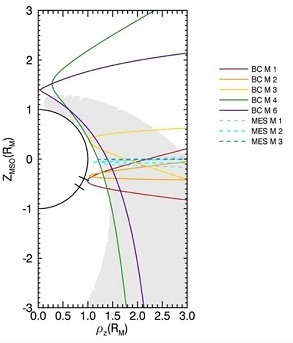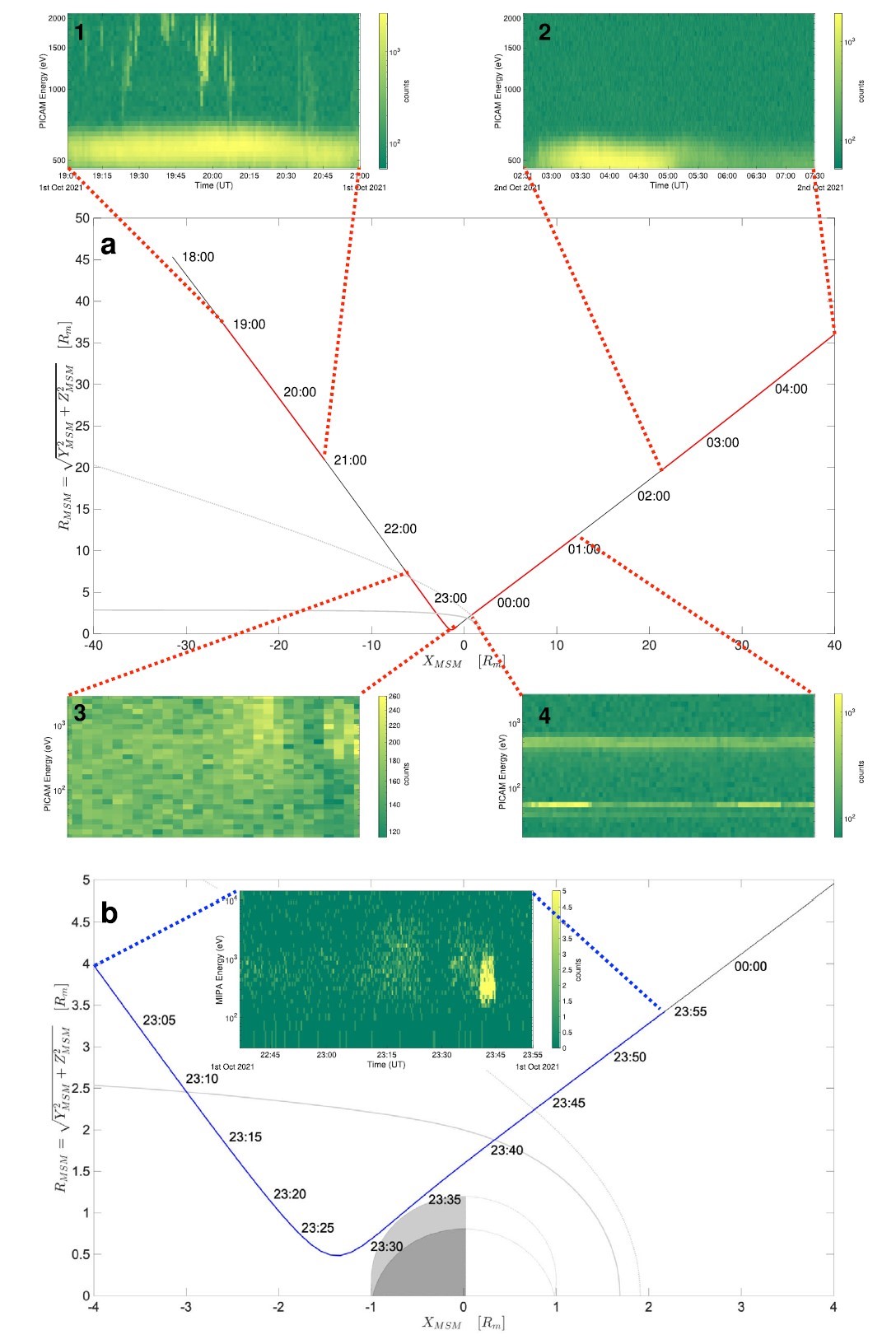

Recently published on Nature Communications the paper on the SERENA scientific observations during the first flyby at Mercury. PICAM and MIPA were operative during the whole passage and observations were performed nearby and inside Mercury’s magnetosphere. The flyby trajectory is shown in detail in Fig. 1. Closest approach occurred on October 1st 2021 at 23:34 UT at an altitude of 199 km above the planetary surface and at a ZMSM of about -0.7 RM in the nightside (Mercury Solar Magnetic frame).
For comparison, Fig. 2 shows the whole set of BepiColombo flybys trajectories as well as the MESSENGER ones, plus the region covered by the NASA mission during its nominal phase (gray area): it can be noted that the first BepiColombo flyby at Mercury (and the second too) occurred in the southern hemisphere at low altitudes, a region never explored by previous missions.


In particular, PICAM and MIPA observations covered the whole approaching phase, and the exiting phase (Fig. 1, red line in the trajectory).
Fig. 3 shows a synthesis of the observations performed: PICAM operated during 4 distinct time periods and observed the solar wind ion flux (Panel a, insets 1 and 4), the inbound magnetosheath, and the inner magnetosphere (Panel a, insert 2), and the region upstream of the bow shock (Panel a, inset 3), while MIPA operated continuously from 22:35 UT to 23:56 UT, and observed the magnetosheath adjacent to the tail, the inner magnetosphere and the outbound magnetopause and bow shock (Panel b).
An intermittent high-energy signal, possibly due to an interplanetary magnetic flux rope, has been observed downstream Mercury, together with low energy solar wind. Low energy ions, possibly due to satellite outgassing, were detected outside the magnetosphere.
The dayside magnetopause and bow-shock crossing were much closer to the planet than expected, signature of a highly eroded magnetosphere.
Different ion populations have been observed inside the magnetosphere, like low latitude boundary layer at magnetopause inbound and partial ring current at dawn close to the planet.
A detailed description of the observations can be found here: https://www.nature.com/articles/s41467-022-34988-x
